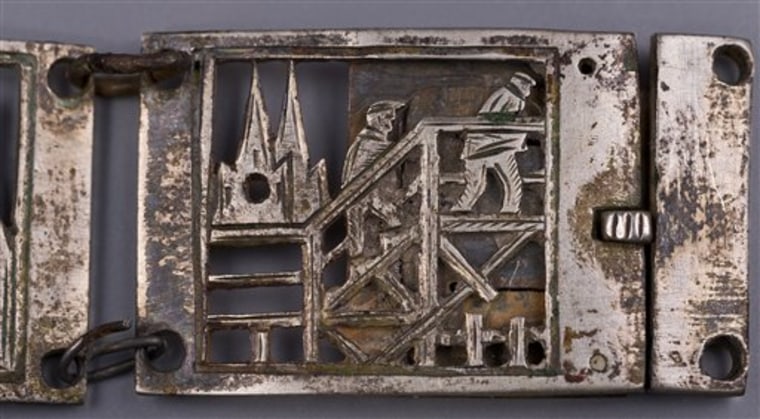Photos of 20 drawings and other artifacts clandestinely made by inmates at Nazi death camps during World War II are on show at the Auschwitz museum and are to travel next to the United States, an official said Tuesday.
A museum spokesman, Pawel Sawicki, said that the "Forbidden Art" exhibition is on display at the former camp bath building at Auschwitz I, the original, red brick part of the Auschwitz-Birkenau death camp.
Large color pictures show drawings and sculptures made by inmates of Auschwitz and of the Buchenwald and Ravensbrueck German Nazi concentration camps.
More than 1 million people, mostly Jews, died at Auschwitz that the Nazi Germans ran in occupied Poland between 1940-45. In Ravensbrueck, in north Germany, most among some 130,000 inmates from across Europe, were Polish. No more than 32,000 survived. Some 56,000 inmates are believed to have died at Buchenwald, in central Germany.
The drawings depict the plight of inmates, scenes from camp life and portraits. They also include excerpts from fairy tales that some inmates wrote for their children left at home, Sawicki said.
Some other items are a wooden figurine and a metal bracelet with scenes from Auschwitz, found near a crematorium at Birkenau, shortly after it was liberated by the Soviet army in January 1945, and a Catholic crucifix from women's camp of Ravensbrueck.
Each picture is accompanied by a brief description and some with few words about their authors.
"Art was the inmates' escape from brutal reality," Sawicki said.
The items are shown in pictures to allow greater mobility of the exhibition and to protect the originals.
"The high quality pictures are the effect of a compromise that allows to us tell the story of these art objects without exposing them to the danger and strain of extensive traveling," Sawicki said. "This is to be a traveling exhibition."
The exhibition will be open until November, when it moves to Washington and Detroit. The originals remain in storage at Auschwitz.
